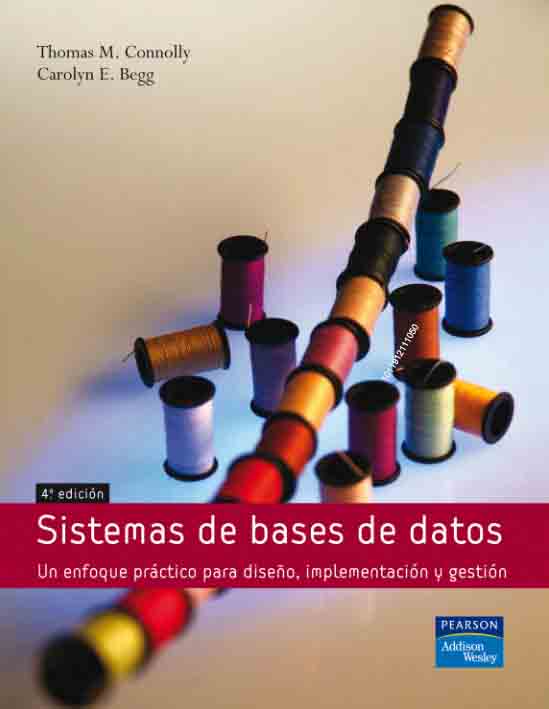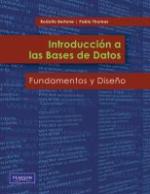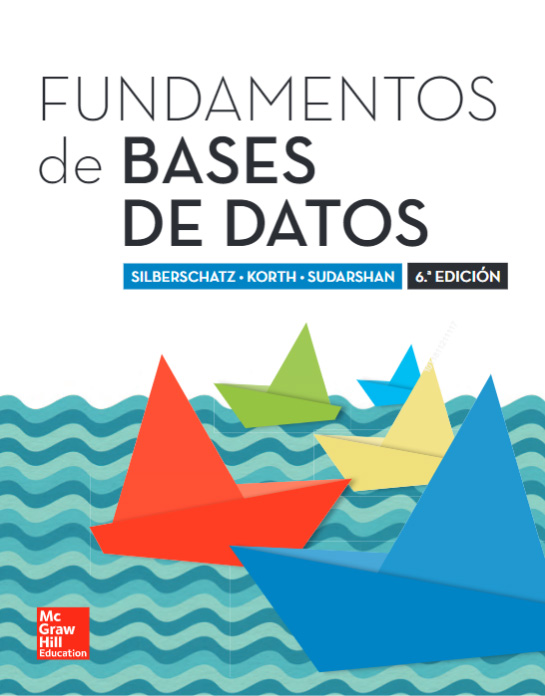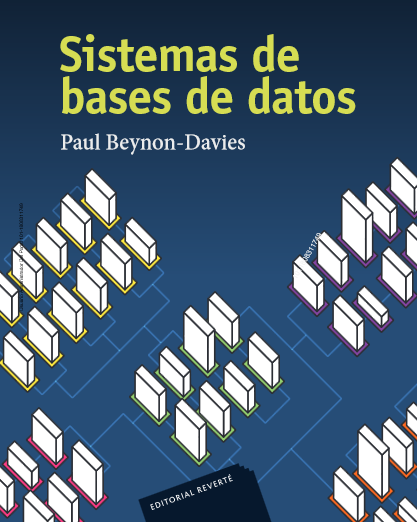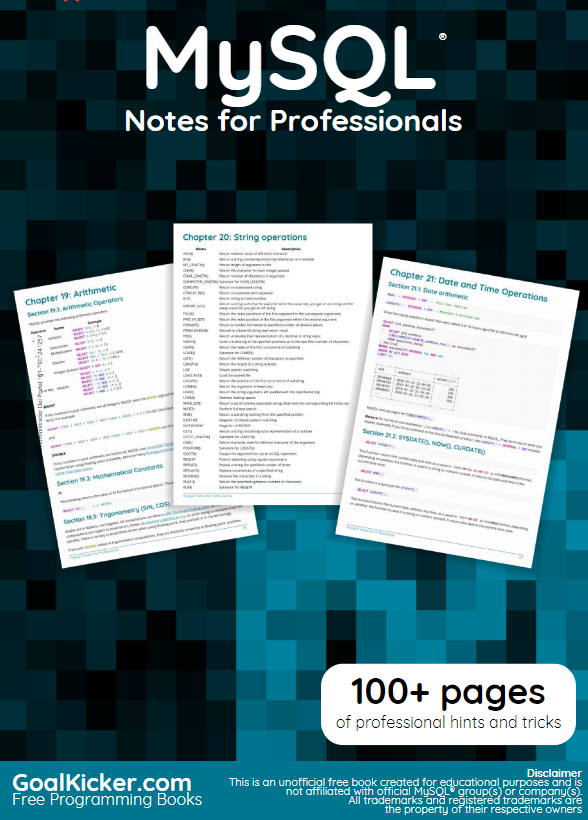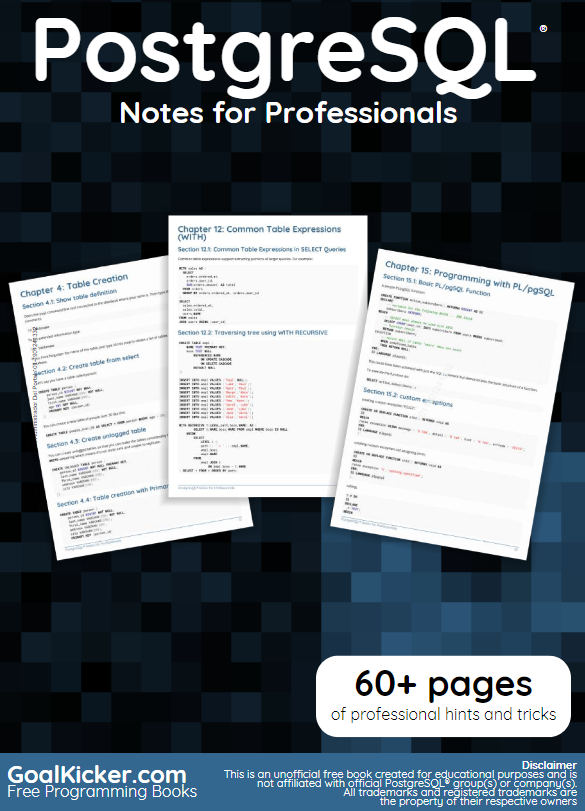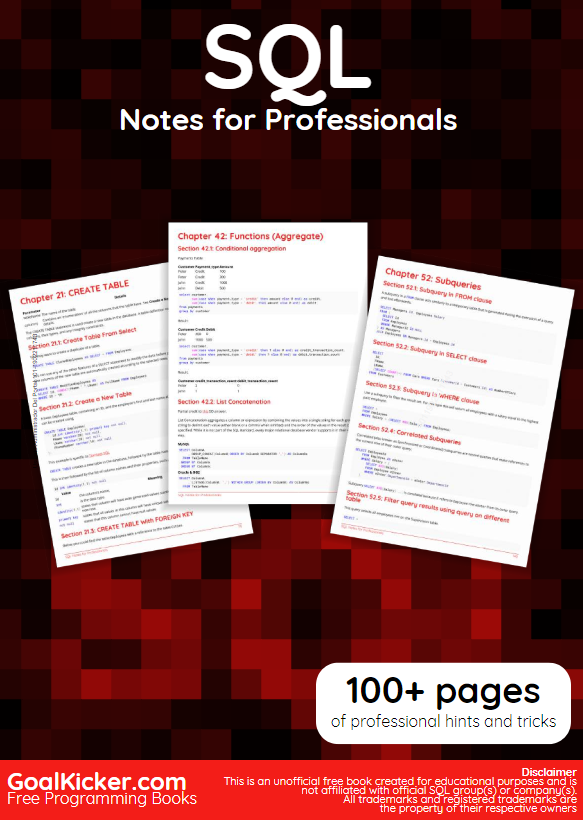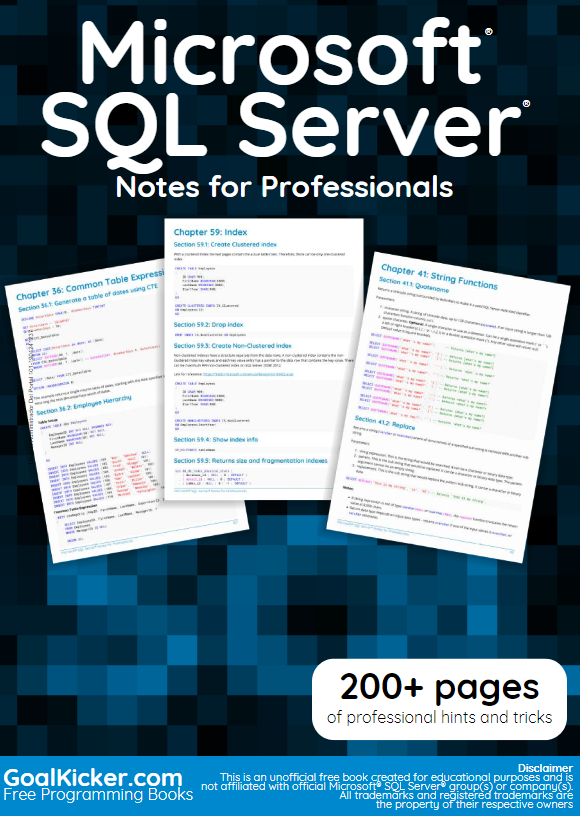
MICROSOFT® SQL SERVER®
Notes for professionals
Goalkicker.com Free Programming Books
Editorial: Otros
Edición: 1 (Gratuita)
Fecha Publicación: 2018
ISBN: -
ISBN ebook: -
Páginas: 286
Grado: Universitario
Área: Informática
Sección: Lenguajes y Metodología de la Programación
Idioma: Español
Etiquetas: Gratuito
 Tweet
Tweet
Edición: 1 (Gratuita)
Fecha Publicación: 2018
ISBN: -
ISBN ebook: -
Páginas: 286
Grado: Universitario
Área: Informática
Sección: Lenguajes y Metodología de la Programación
Idioma: Español
Etiquetas: Gratuito
 Tweet
Tweet
About
Chapter 1: Getting started with Microsoft SQL Server
Chapter 2: Data Types
Chapter 3: Converting data types
Chapter 4: User Defined Table Types
Chapter 5: SELECT statement
Chapter 6: Alias Names in SQL Server
Chapter 7: NULLs
Chapter 8: Variables
Chapter 9: Dates
Chapter 10: Generating a range of dates
Chapter 11: Database Snapshots
Chapter 12: COALESCE
Chapter 13: IF...ELSE
Chapter 14: CASE Statement
Chapter 15: INSERT INTO
Chapter 16: MERGE
Chapter 17: CREATE VIEW
Chapter 18: Views
Chapter 19: UNION
Chapter 20: TRY/CATCH
Chapter 21: WHILE loop
Chapter 22: OVER Clause
Chapter 23: GROUP BY
Chapter 24: ORDER BY
Chapter 25: The STUFF Function
Chapter 26: JSON in SQL Server
Chapter 27: OPENJSON
Chapter 28: FOR JSON
Chapter 29: Queries with JSON data
Chapter 30: Storing JSON in SQL tables
Chapter 31: Modify JSON text
Chapter 32: FOR XML PATH
Chapter 33: Join
Chapter 34: cross apply
Chapter 35: Computed Columns
Chapter 36: Common Table Expressions
Chapter 37: Move and copy data around tables
Chapter 38: Limit Result Set
Chapter 39: Retrieve Information about your Instance
Chapter 40: With Ties Option
Chapter 41: String Functions
Chapter 42: Logical Functions
Chapter 43: Aggregate Functions
Chapter 44: String Aggregate functions in SQL Server
Chapter 45: Ranking Functions
Chapter 46: Window functions
Chapter 47: PIVOT / UNPIVOT
Chapter 48: Dynamic SQL Pivot
Chapter 49: Partitioning
Chapter 50: Stored Procedures
Chapter 51: Retrieve information about the database
Chapter 52: Split String function in SQL Server
Chapter 53: Insert
Chapter 54: Primary Keys
Chapter 55: Foreign Keys
Chapter 56: Last Inserted Identity
Chapter 57: SCOPE_IDENTITY()
Chapter 58: Sequences
Chapter 59: Index
Chapter 60: Full-Text Indexing
Chapter 61: Trigger
Chapter 62: Cursors
Chapter 63: Transaction isolation levels
Chapter 64: Advanced options
Chapter 65: Migration
Chapter 66: Table Valued Parameters
Chapter 67: DBMAIL
Chapter 68: In-Memory OLTP (Hekaton)
Chapter 69: Temporal Tables
Chapter 70: Use of TEMP Table
Chapter 71: Scheduled Task or Job
Chapter 72: Isolation levels and locking
Chapter 73: Sorting/ordering rows
Chapter 74: Privileges or Permissions
Chapter 75: SQLCMD
Chapter 76: Resource Governor
Chapter 77: File Group
Chapter 78: Basic DDL Operations in MS SQL Server
Chapter 79: Subqueries
Chapter 80: Pagination
Chapter 81: CLUSTERED COLUMNSTORE
Chapter 82: Parsename
Chapter 83: Installing SQL Server on Windows
Chapter 84: Analyzing a Query
Chapter 85: Query Hints
Chapter 86: Query Store
Chapter 87: Querying results by page
Chapter 88: Schemas
Chapter 89: Backup and Restore Database
Chapter 90: Transaction handling
Chapter 91: Natively compiled modules (Hekaton)
Chapter 92: Spatial Data
Chapter 93: Dynamic SQL
Chapter 94: Dynamic data masking
Chapter 95: Export data in txt file by using SQLCMD
Chapter 96: Common Language Runtime Integration
Chapter 97: Delimiting special characters and reserved words
Chapter 98: DBCC
Chapter 99: BULK Import
Chapter 100: Service broker
Chapter 101: Permissions and Security
Chapter 102: Database permissions
Chapter 103: Row-level security
Chapter 104: Encryption
Chapter 105: PHANTOM read
Chapter 106: Filestream
Chapter 107: bcp (bulk copy program) Utility
Chapter 108: SQL Server Evolution through different versions (2000 - 2016)
Chapter 109: SQL Server Management Studio (SSMS)
Chapter 110: Managing Azure SQL Database
Chapter 111: System database - TempDb
Appendix A: Microsoft SQL Server Management Studio Shortcut Keys
Credits
You may also like
*La edición digital no incluye códigos de acceso a material adicional o programas mencionados en el libro.


